Follow us 👆 on WeChat, reply "python" to get the beginner tutorial! Source from the internet, please delete if infringed.
-
[Tutorial The method of obtaining is at the end of the text!!]
-
[Tutorial The method of obtaining is at the end of the text!!]


1、 One of the Three Musketeers: “Python Programming: From Beginner to Practice“
One of the Three Musketeers: “Python Programming: From Beginner to Practice“ :
:
This book is a Python introductory book aimed at readers of all levels. The book is divided into two parts: the first part introduces the basic concepts necessary for programming with Python, including powerful Python libraries and tools such as matplotlib, NumPy, and Pygal, as well as lists, dictionaries, if statements, classes, files and exceptions, code testing, and more; the second part puts theory into practice, explaining how to develop three projects, including simple Python 2D game development, how to use data to generate interactive infographics, and creating and customizing simple web applications, helping readers solve common programming problems and confusion.
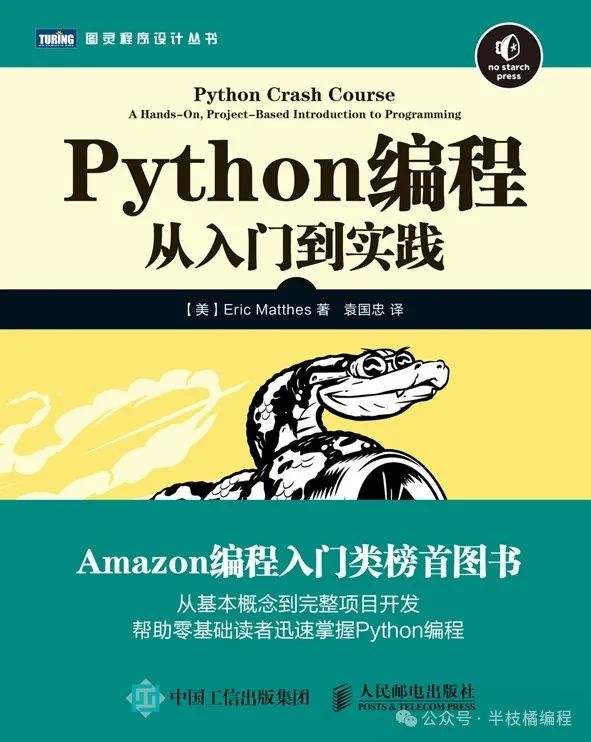
–————————–
Method of obtaining :
:
-
Like + View 
-
Private message in the background: python 
2、 Second of the Three Musketeers: “Python Geek Project Programming“
Second of the Three Musketeers: “Python Geek Project Programming“
This book contains a set of imaginative programming projects that will guide you to create images and music with Python, simulate real-world phenomena, and interact with hardware such as Arduino and Raspberry Pi. You will learn to use common Python tools and libraries like numpy, matplotlib, and pygame to complete the following tasks:
● Generate kaleidoscope patterns using parametric equations and the turtle module;
● Create music on the computer by simulating harmonic frequencies;
● Convert graphical images to ASCII text graphics;
● Write a 3D stereogram program to generate 3D images hidden under random patterns;
● Create realistic animations using OpenGL shaders by exploring particle systems, transparency, and billboard techniques;
● Achieve 3D visualization using data from CT and MRI scans;
● Connect the computer to Arduino programming to create a laser show that responds to music.
Through this book, you can enjoy the true fun of being a geek!
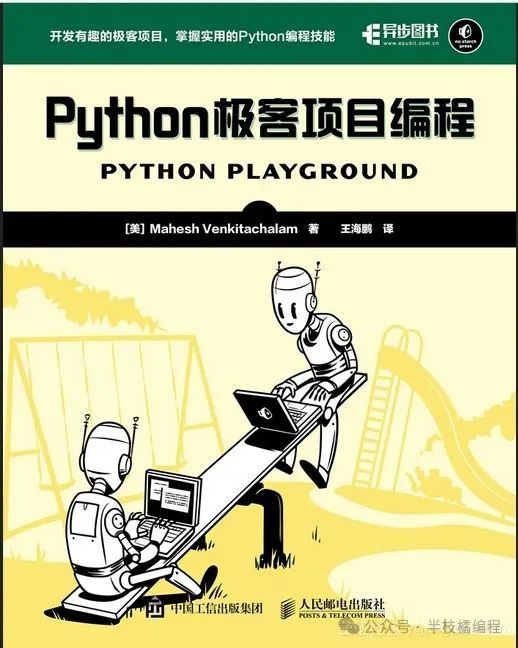
–————————–
Method of obtaining :
:
-
Like + View 
-
Private message in the background: python 
3、 Third of the Three Musketeers: “Python Programming Quick Start – Automate the Boring Stuff“
Third of the Three Musketeers: “Python Programming Quick Start – Automate the Boring Stuff“
This book is suitable for anyone who wants to learn programming through Python, especially beginners with no programming background. By reading this book, readers will be able to utilize powerful programming languages and tools, and experience the joy of Python programming.
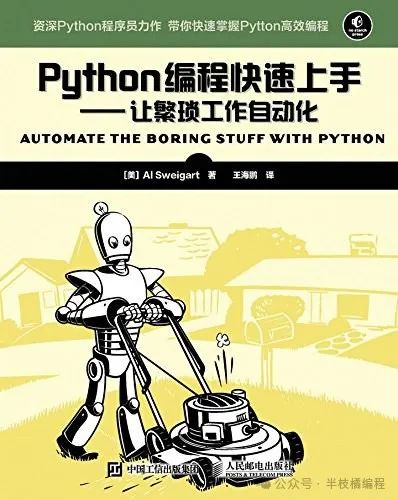
–————————–
Method of obtaining :
:
-
Like + View 
-
Private message in the background: python 
4、 “Functional Programming in Python”
“Functional Programming in Python”
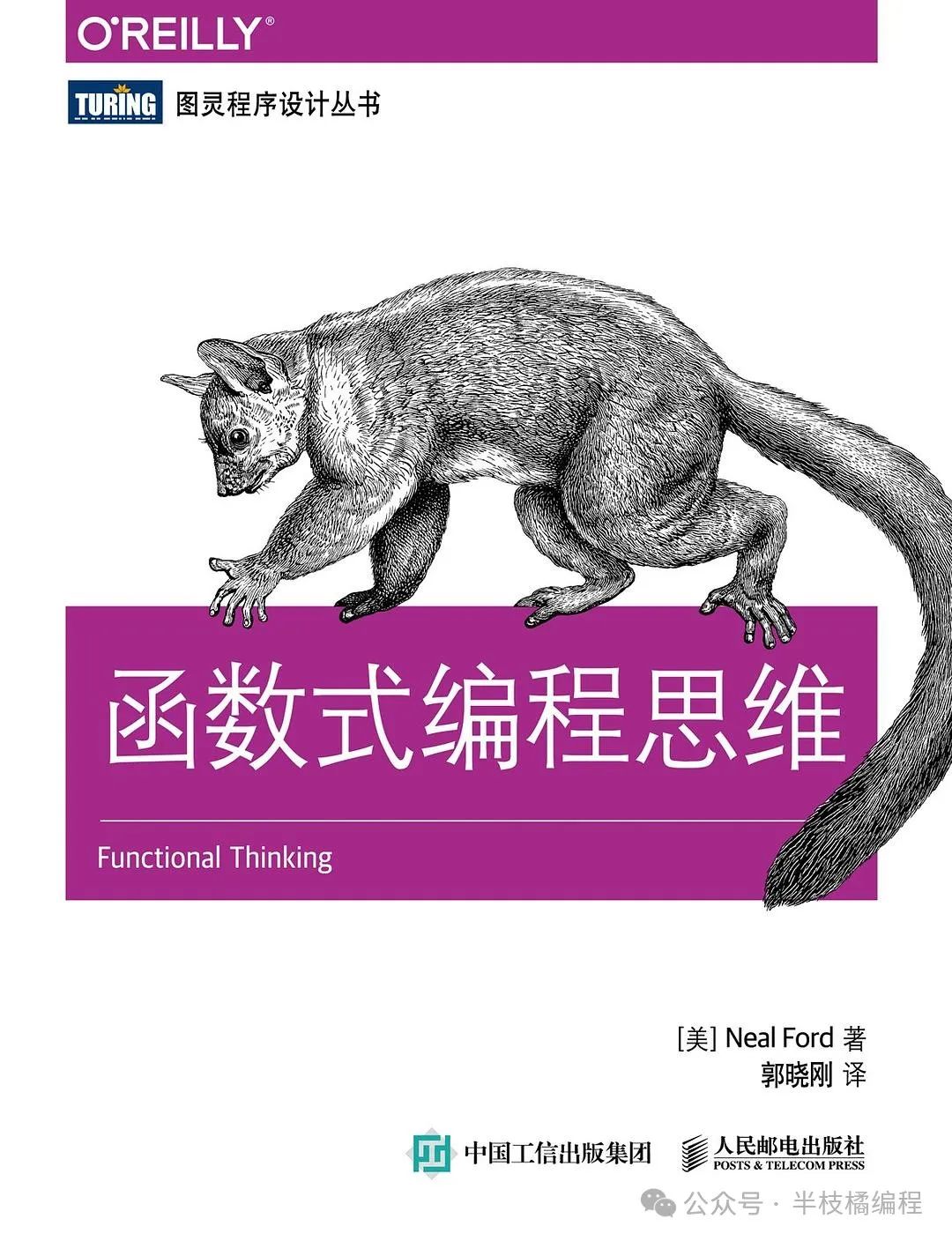
–————————–
Method of obtaining :
:
-
Like + View 
-
Private message in the background: python 
5、 “Fluent Python”“
“Fluent Python”“
This book, written by Luciano Ramalho, who has been working in Python development for nearly 20 years, with technical reviewers such as Victor Stinner and Alex Martelli, analyzes programming details from the perspective of language design, covering both Python 3 and Python 2, explaining the causes and solutions of language traps that cannot be understood without hands-on practice, teaching you to write idiomatic Python code.
● Python Data Model: Understand why special methods are key to consistent object behavior.
● Data Structures: Make full use of built-in types, understand the duality of Unicode text and bytes.
● Treat Functions as Objects: Treat Python functions as first-class objects and understand the impact of this on popular design patterns.
● Object-Oriented Idioms: Learn references, mutability, interfaces, operator overloading, and multiple inheritance through class construction.
● Control Flow: Learn to use context managers, generators, coroutines, and concurrency implemented through the concurrent.futures and asyncio packages.
● Metaprogramming: Understand how properties, descriptors, class decorators, and metaclasses work.
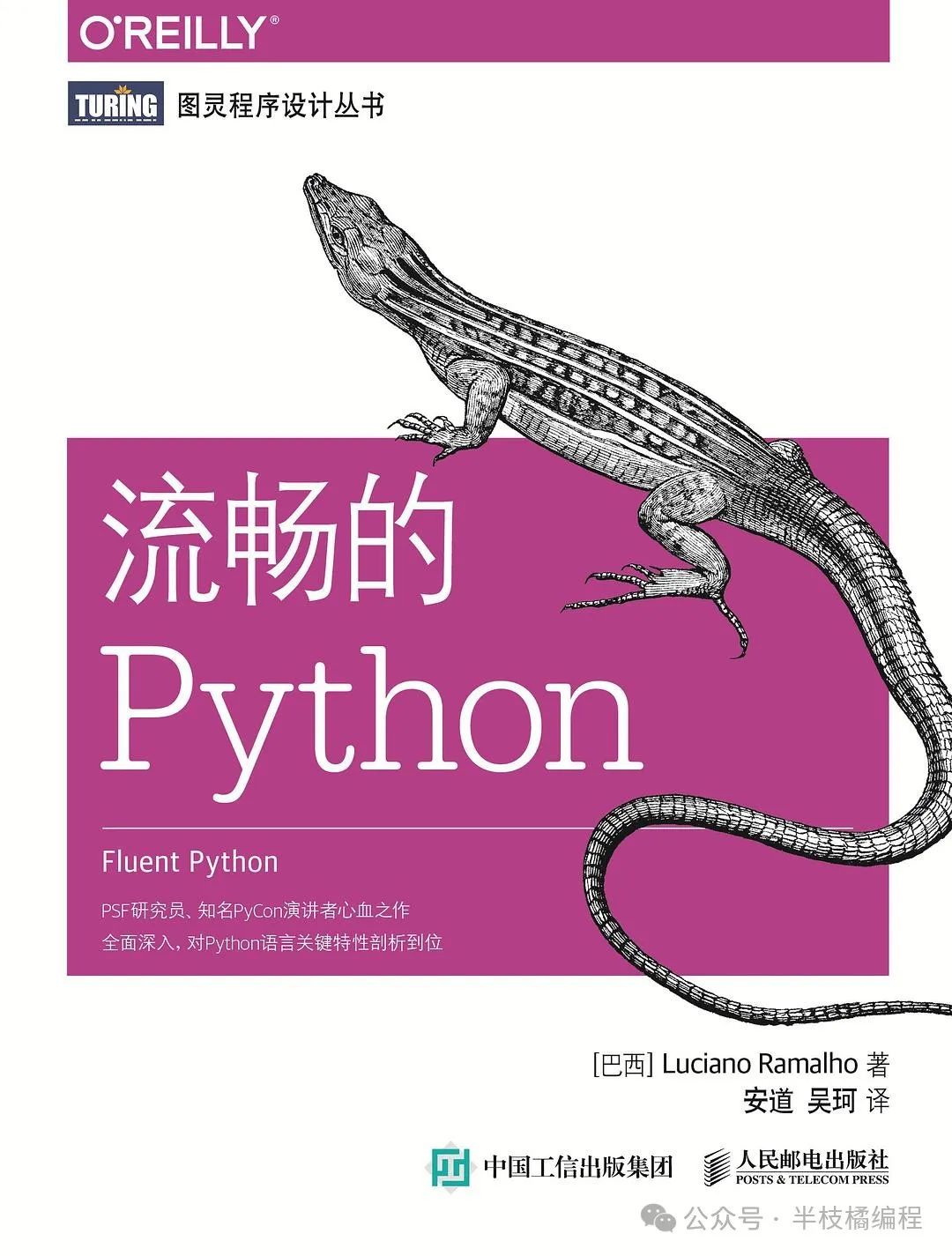
–————————–
Method of obtaining :
:
-
Like + View 
-
Private message in the background: python 
6、 “Deep Learning with Python”
“Deep Learning with Python”
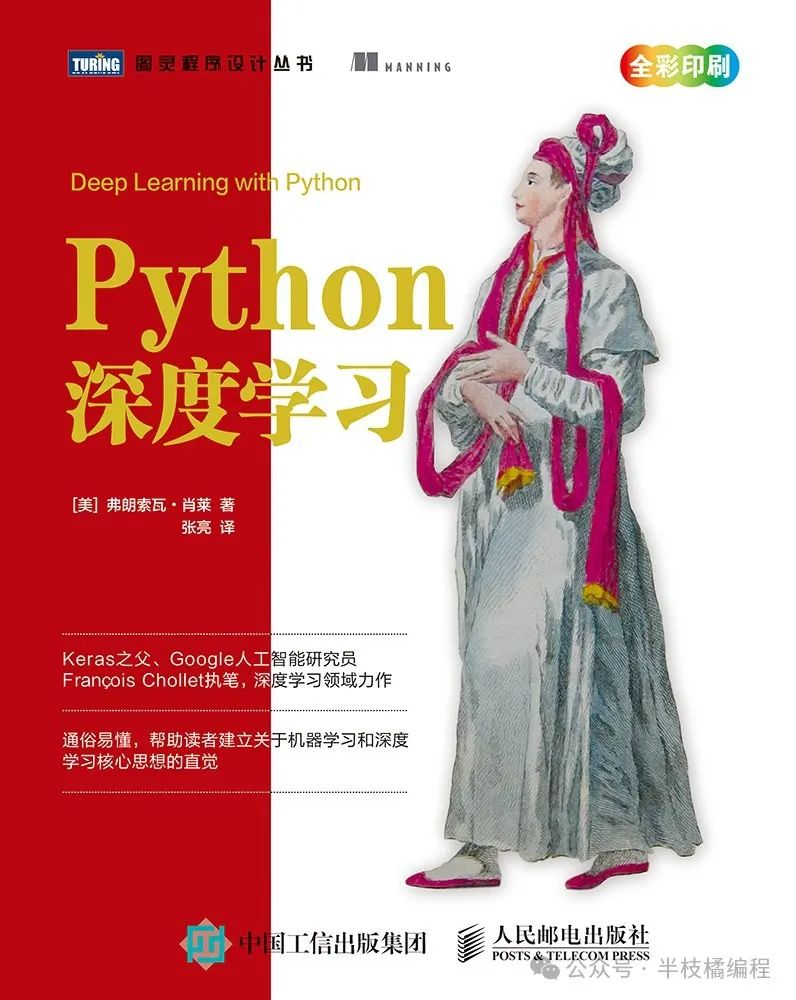
–————————–
Method of obtaining :
:
-
Like + View 
-
Private message in the background: python 
7、 “Learn Python Algorithms Through 100 Examples”
“Learn Python Algorithms Through 100 Examples”
This book provides a detailed introduction to 100 algorithm examples written in Python in a simple and easy-to-understand language. These examples are generally explained according to the process of “problem description – problem analysis – algorithm design – determine program framework – program coding implementation – running results – problem expansion”, with adjustments made based on actual needs. These examples balance fun, practicality, and operability, and most revolve around classic algorithm problems.
Through studying and practicing the examples in this book, readers can greatly enhance their programming interest, broaden their programming thinking, improve their programming skills and algorithm design abilities, experience the joy of program design, and ultimately solve related problems in life and work.
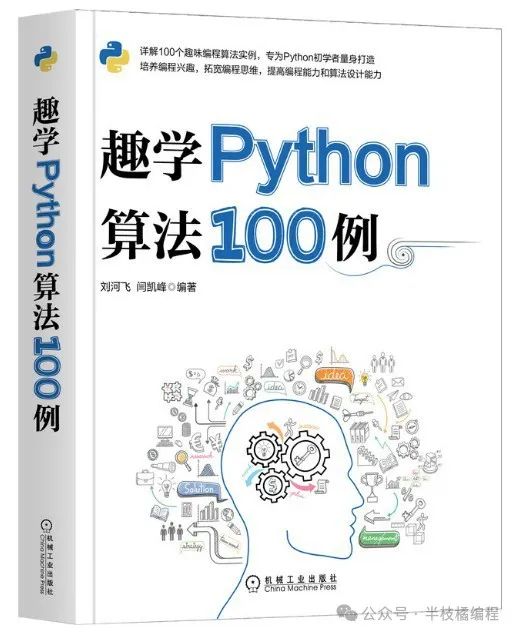
–————————–
Method of obtaining :
:
-
Like + View 
-
Private message in the background: python 
8、 “Learn Python Through Comics”
“Learn Python Through Comics”
“Learn Python Through Comics: Fun, Informative, Playful, and Practical (Full Color Edition)” consists of 16 chapters: Chapter 1 introduces the history and characteristics of Python and sets up the development environment. Chapters 2-5 cover basic knowledge of Python, including data types, expressions, control flow, etc. Chapters 6-7 introduce commonly used container types and string data in Python. Chapters 8-11 delve into advanced topics in Python, including functions, classes and objects, exception handling, and commonly used built-in modules. Chapters 12-16 explain the usage of practical libraries in Python, including file reading and writing, graphical user interfaces, network communication, database access, and multithreading. Each chapter includes a “hands-on” section where you can find application examples; at the end of each chapter, there is a “practice” section with synchronous exercises.
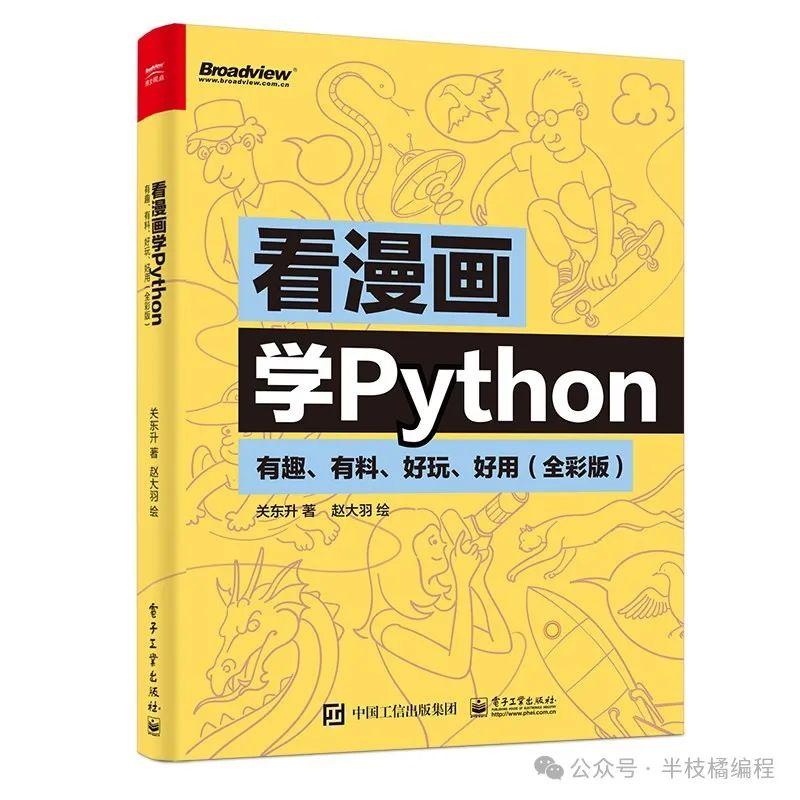
–————————–
Method of obtaining :
:
-
Like + View 
-
Private message in the background: python 
9、 “Introduction to Deep Learning”
“Introduction to Deep Learning”
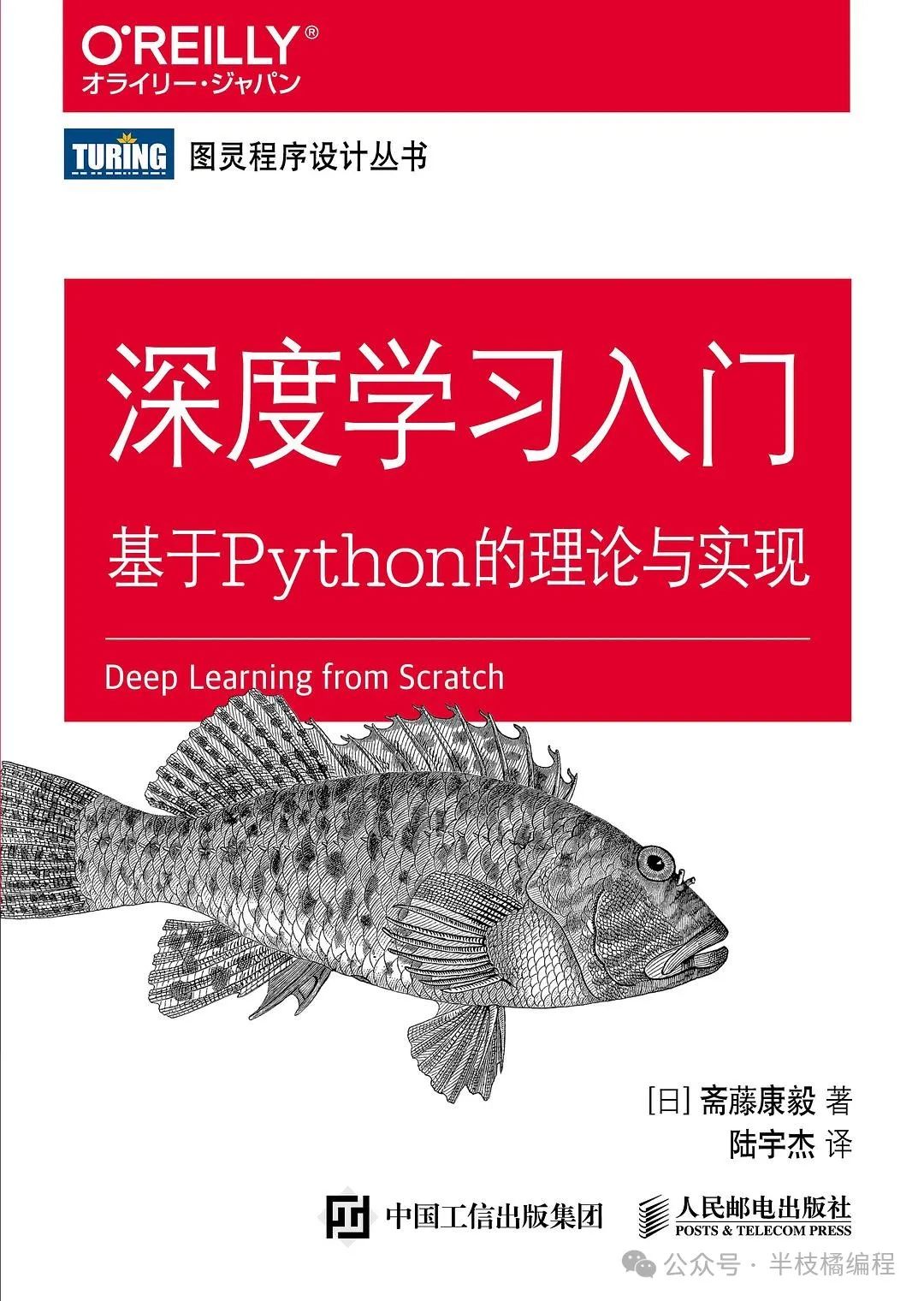
–————————–
Method of obtaining :
:
-
Like + View 
-
Private message in the background: python 
10、 “Data Analysis with Python”
“Data Analysis with Python”
This book’s first edition was published in 2012, at which time the open-source data analysis libraries based on Python (e.g., pandas) were still a rapidly developing new thing, and this book became a classic bestseller in the field, with nearly 300,000 copies sold in the first two editions of the Chinese version.
The third edition has been updated for Python 3.10 and pandas 1.4, demonstrating how to efficiently solve a series of data analysis problems through practical explanations and real cases. Readers will learn about the new versions of pandas, NumPy, IPython, and Jupyter during the reading process.
The author of the book, Wes McKinney, is the founder of the Python pandas project. The book’s introduction to Python data science tools is both practical and innovative, making it very suitable for data analysts who are just starting to learn Python or Python programmers who are beginning to learn data science and scientific computing. Readers can obtain data files and related materials from GitHub.
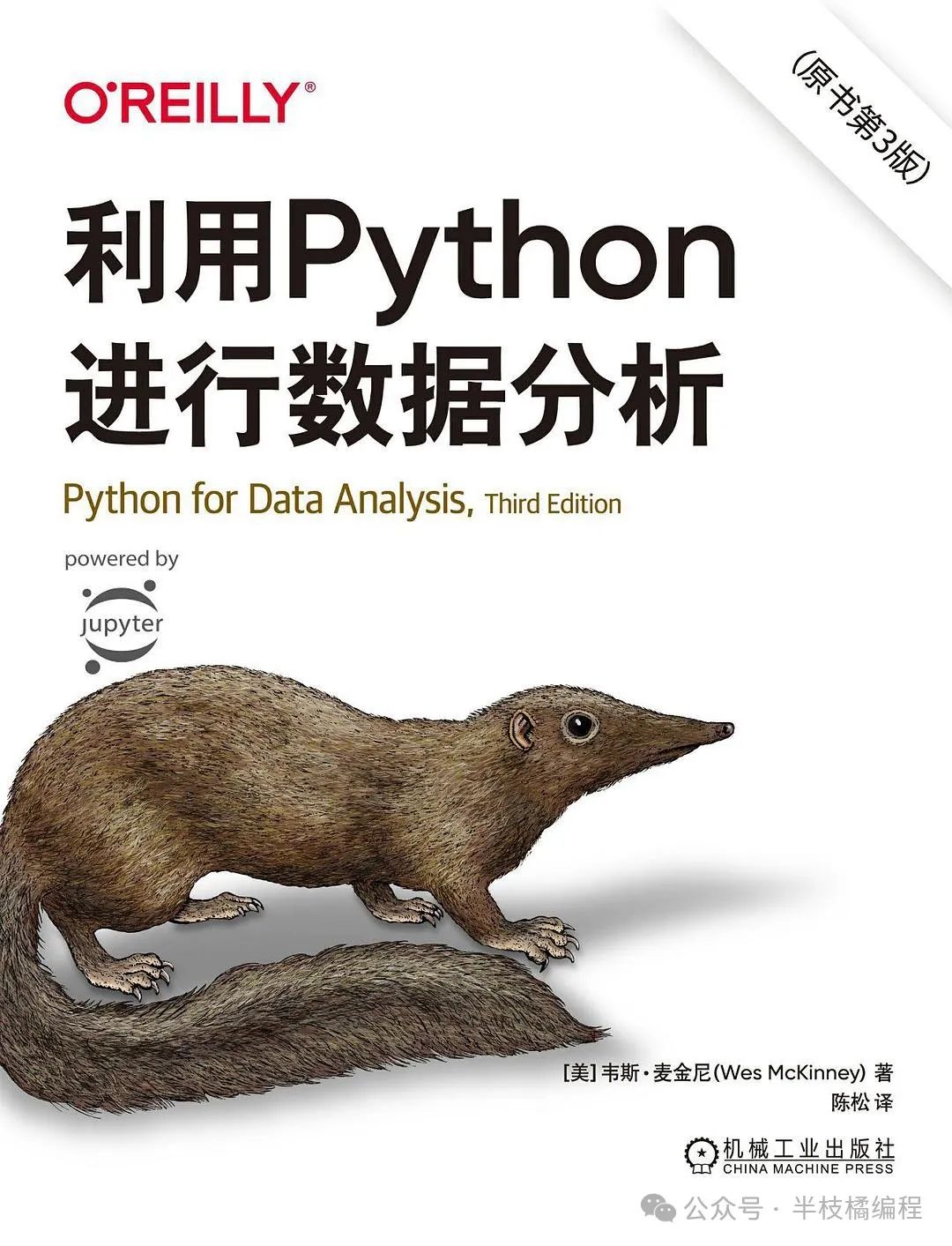
–————————–
Method of obtaining :
:
-
Like + View 
-
Private message in the background: python 
11、 “Excel + Python”
“Excel + Python”
The founder of xlwings teaches you how to make Excel fly!
* Say goodbye to tedious formulas and VBA code
* Office workers learn Python without pressure
* The popular Python library xlwings is taught by its founder
Every time you spend hours manually updating an Excel workbook, or every time an Excel workbook crashes due to saving too much data, you should stop and think about whether you should change your working method. This book will show why it is wise to introduce Python into Excel – you will be able to easily break through Excel’s limitations, avoid human errors, and spend more valuable time on tasks that generate greater value.
On the online user feedback forum operated by Microsoft, many users have expressed the hope of “making Python the scripting language for Excel”. What advantages does Python have compared to Excel’s existing VBA language, and how can these advantages be leveraged? The birth of the open-source Python library xlwings answers these questions well, as it perfectly combines Excel and Python. As the founder of xlwings, the author of this book will demonstrate how to harness the power of Python to make Excel fly!
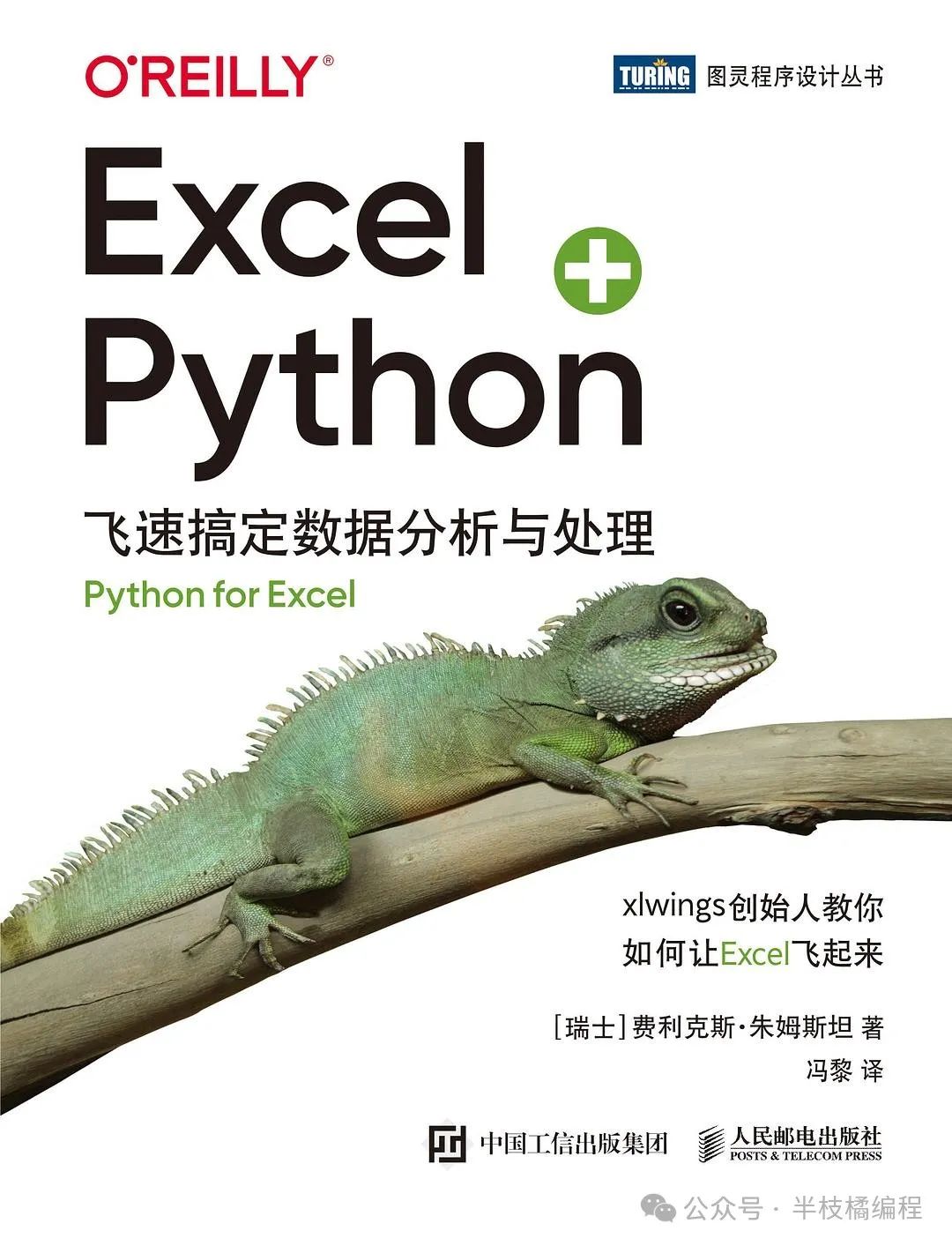
–————————–
Method of obtaining :
:
-
Like + View 
-
Private message in the background: python 
12、 “Algorithm Visualization”
“Algorithm Visualization”

–————————–
Method of obtaining :
:
-
Like + View 
-
Private message in the background: python 
13、 “Python Computer Vision Programming”
“Python Computer Vision Programming”
“Python Computer Vision Programming” is the authoritative practical guide for computer vision programming, explaining basic theories and algorithms relying on the Python language, and analyzing technologies such as object recognition, content-based image search, optical character recognition, optical flow, tracking, 3D reconstruction, stereoscopic imaging, augmented reality, pose estimation, panorama creation, image segmentation, denoising, and image grouping through numerous examples. Additionally, the exercises included in the book allow readers to consolidate and learn to apply programming knowledge.
“Python Computer Vision Programming” is suitable for readers who have a certain programming and mathematical foundation and want to understand the basic theories and algorithms of computer vision, as well as researchers and practitioners in fields such as computer science, signal processing, physics, applied mathematics, statistics, neurophysiology, and cognitive science.
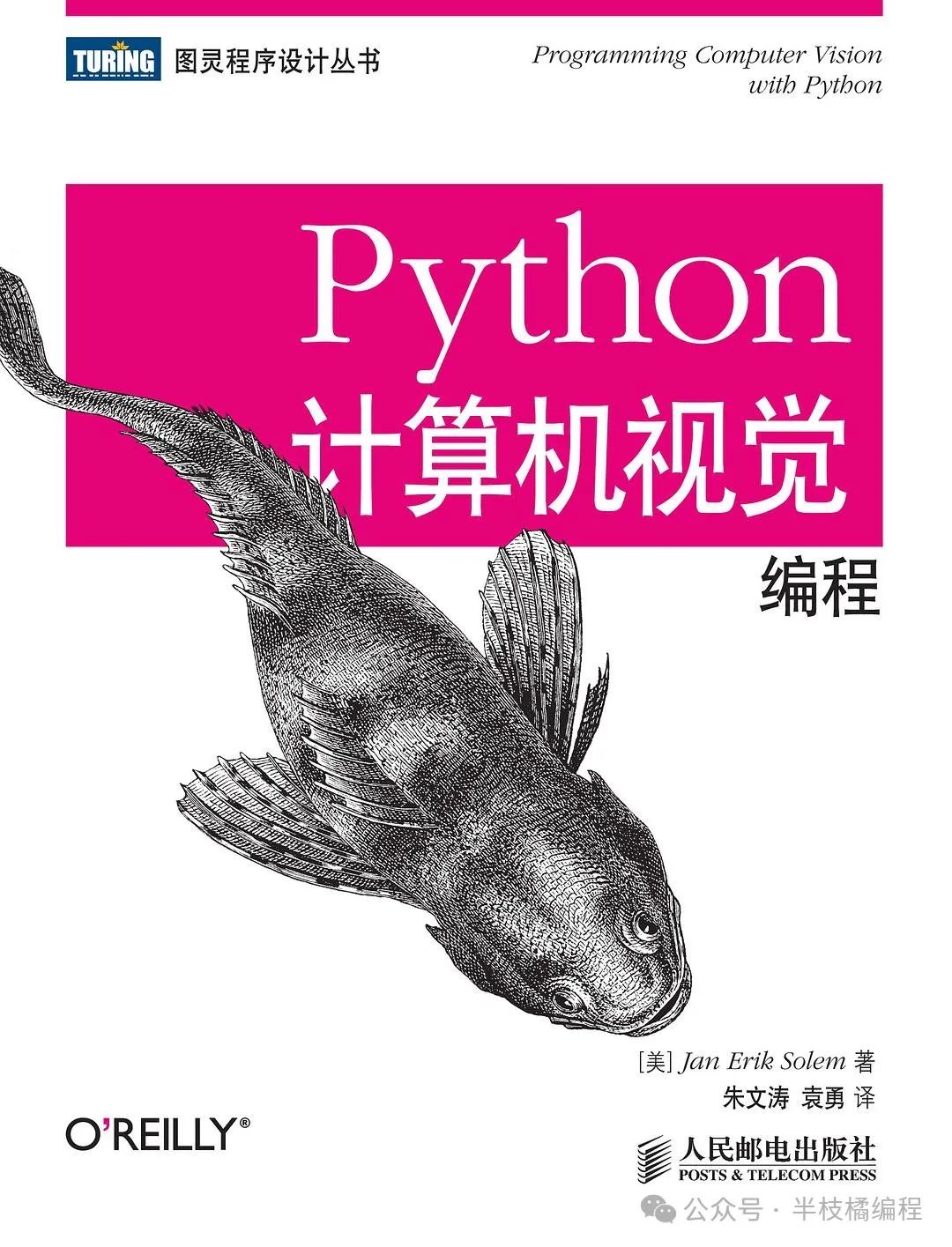
–————————–
Method of obtaining :
:
-
Like + View 
-
Private message in the background: python 
 “Python Cookbook”
“Python Cookbook”
This book introduces some techniques and methods for Python applications in various fields, covering topics such as data structures and algorithms, strings and text, numbers, dates and times, iterators and generators, files and I/O, data encoding and processing, functions, classes and objects, metaprogramming, modules and packages, web programming and concurrency, practical scripts and system management, testing, debugging, and exceptions, C language extensions, etc.
This book covers many common problems in Python applications and offers generic solutions. It contains a wealth of practical programming techniques and sample code, tested in the Python 3.3 environment, which can be easily applied to actual projects. Additionally, the book explains in detail how the solutions work and why they work.
This book is highly suitable for Python programmers with a certain programming background as a reference.
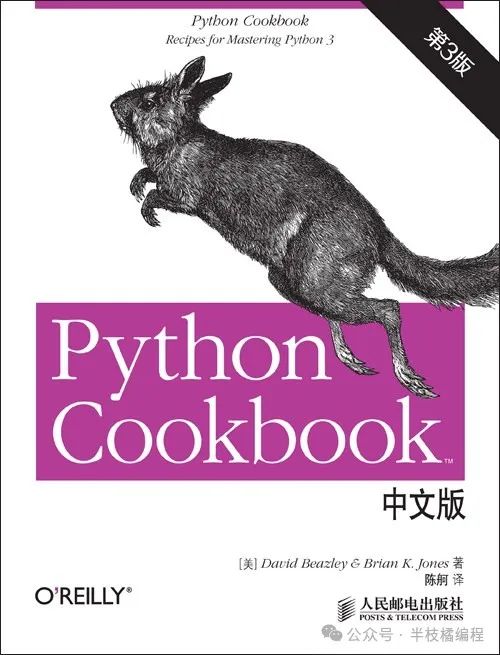
–————————–
Method of obtaining :
:
-
Like + View 
-
Private message in the background: python 
15、 “Large-Scale Network Technology Architecture”
“Large-Scale Network Technology Architecture”
“Large-Scale Website Technology Architecture: Core Principles and Case Analysis” reviews the development history of large-scale website technology, analyzes large-scale website architecture patterns, and deeply discusses the core principles of large-scale internet architecture design, presenting a panoramic view of large-scale website development that includes technology selection, architecture design, performance optimization, web security, system release, and operation monitoring through a series of typical website architecture design cases.
“Large-Scale Website Technology Architecture: Core Principles and Case Analysis” is not only suitable for guiding website engineers and architects in website technology architecture design but can also be used to guide product managers, project managers, and testing operation personnel to understand the basic concepts of website technology architecture; it can also serve as a reference for various software development practitioners, including enterprise system developers, to understand the solutions and development concepts of large-scale websites.

–————————–
Method of obtaining :
:
-
Like + View 
-
Private message in the background: python 
16、 “Flask Web Development”
“Flask Web Development”
This book is not only suitable for beginner web developers but also an excellent reference for Python programmers to learn advanced web development techniques.
• Learn the basic structure of Flask applications and write example applications;
• Use essential components, including templates, databases, web forms, and email support;
• Build scalable large applications using packages and modules;
• Implement user authentication, roles, and profiles;
• Reuse templates in blog websites, paginate lists, and use rich text;
• Implement usable features on smartphones, tablets, and other third-party clients using Flask-based RESTful APIs;
• Learn to run unit tests and improve performance;
• Deploy web applications to production servers.
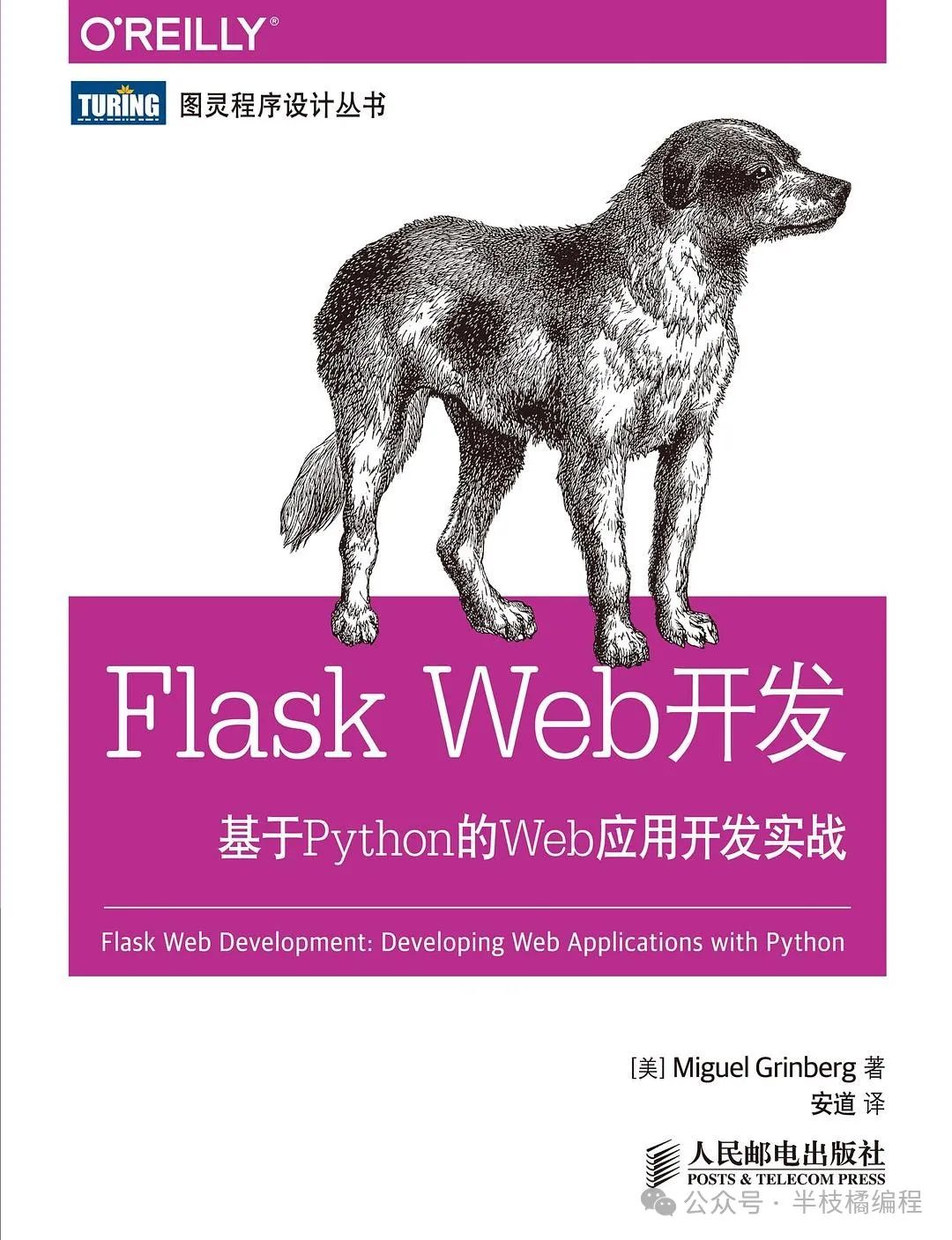
How to obtain:
-
Like + View
-
Reply in the WeChat public account: “python”
Get the latest Python beginner learning materials for 2024,reply in the background:Python